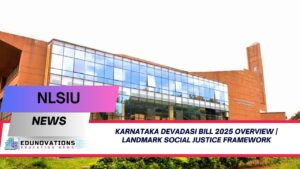Discover how a new indigenous-led education center Australia is reshaping inclusive learning and First Nations cultural leadership.
Introduction: A New Chapter in Inclusive Education
A groundbreaking indigenous-led education center Australia has opened its doors at the University of Melbourne, signaling a transformative shift in the country’s educational and cultural landscape. This milestone project is not just a building—it is a powerful symbol of self-determination, cultural revival, and academic inclusion, led entirely by First Nations communities.
With First Nations elders, scholars, and educators at the helm, this initiative aims to embed Indigenous knowledge systems into mainstream learning environments, while also offering a safe, empowering space for cultural exchange, language preservation, and leadership development.
Honoring Country, Knowledge, and Identity
The launch of the indigenous-led education center Australia was marked by a Welcome to Country and ceremonial events celebrating the deep connection between education and land. Grounded in the wisdom of Wurundjeri Woi-wurrung Traditional Owners and other local custodians, the center will serve as a dynamic space for intergenerational learning, truth-telling, and community building.
The space includes:
- Teaching areas designed with Indigenous architectural elements
- Outdoor gathering zones that reflect traditional storytelling circles
- Language preservation resources for Aboriginal and Torres Strait Islander dialects
- Mentoring programs for Indigenous youth and scholars
Vision and Mission: Reclaiming Educational Narratives
This indigenous-led education center Australia was designed not just to include Indigenous people in academia, but to re-center Indigenous voices and leadership. It represents a long-overdue reversal of colonial educational systems that historically excluded or marginalized First Nations perspectives.
Core goals of the center include:
- Embedding Aboriginal knowledge in curricula
- Empowering community-driven Indigenous leadership
- Bridging Western and Indigenous ways of knowing
- Fostering cultural literacy among non-Indigenous students
First Nations Cultural Learning Hub: More Than a Building
The newly opened center also functions as a first nations cultural learning hub, offering year-round programs in cultural awareness, sustainability practices, Indigenous arts, and historical truth-telling. Workshops, guest lectures, and immersive experiences led by Elders and knowledge holders will engage both local communities and international audiences.
This first nations cultural learning hub will collaborate with schools, universities, and community organizations to ensure that cultural education becomes an accessible and integral part of learning.
An Aboriginal Knowledge Education Model for the Future
Unlike traditional institutions, this model operates on an aboriginal knowledge education model—one that values oral histories, connection to land, and spiritual identity alongside scientific and critical inquiry.
Key educational innovations include:
- Dual knowledge systems frameworks in science and humanities
- Indigenous-led research fellowships and PhD supervision
- Community-defined success metrics beyond standardized testing
- Ethical research practices rooted in Country, kinship, and reciprocity
Comments from Experts and Elders
Dr. Sherry Balcombe, a Yorta Yorta elder and educator, praised the center’s foundation, stating:
“It’s more than a milestone—it’s a return. This space returns power to First Nations people in education, where it belongs.”
Vice-Chancellor Duncan Maskell of the University of Melbourne added:
“We are proud to support Indigenous leadership in education. This is not a token initiative—this is structural transformation.”
Internal Learning Support and Resources
Students, educators, and policy advocates looking to learn more about Indigenous culture, inclusive leadership, or sustainable education can explore additional free learning tools:
- NCERT Courses for foundational academic learning
- Current Affairs on Indigenous policies and global education news
- Notes for school and exam prep
- MCQs to assess knowledge
- Educational Videos on history, civics, and society
- Syllabus for updated curriculum
- NCERT Mind Maps & PDFs for visual learning
External Engagement for Schools
If your school or institution wants to promote cultural inclusion through a digital platform or education portal, explore solutions with:
🔗 Mart Ind Infotech – Website for Schools
Why This Center Matters for Australia’s Future
- 1 in 3 Indigenous students still face cultural exclusion in classrooms
- Less than 2% of university staff are Indigenous in Australia
- Culturally inclusive education improves academic performance by over 20% in Indigenous learners (Australian Institute of Health and Welfare)
This indigenous-led education center Australia challenges these statistics head-on—putting Indigenous students at the center of educational change rather than at its margins.
10 FAQs About the Indigenous-Led Education Center
1. What is the indigenous-led education center Australia?
It’s a new center built and managed by Indigenous communities to integrate First Nations knowledge into mainstream education.
2. Who leads the center’s curriculum design?
First Nations educators, Elders, and scholars collaboratively lead the process.
3. What is a first nations cultural learning hub?
A place dedicated to teaching Indigenous culture, language, and heritage through community-led programs.
4. How does the center support inclusive learning?
It provides safe, affirming spaces for Indigenous students and trains non-Indigenous students in cultural awareness.
5. What does the aboriginal knowledge education model focus on?
It focuses on land-based learning, storytelling, ethics, and spiritual identity as part of education.
6. Who can attend programs at the center?
Programs are open to students, educators, community members, and international guests.
7. How is community driven indigenous leadership promoted?
By appointing First Nations leaders to key governance, teaching, and research roles.
8. Is this center part of the national education policy?
While not yet national, it aligns with Australia’s Reconciliation Action Plan and Closing the Gap targets.
9. Can non-Indigenous people engage with the center?
Yes, the center encourages inclusive participation to foster mutual understanding.
10. How can schools replicate this model?
By collaborating with Indigenous communities, hiring First Nations educators, and adopting cultural literacy programs.









